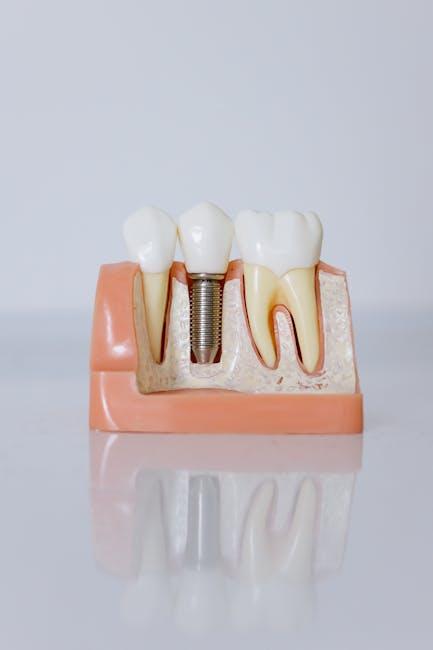
Defensive Dentistry: Perceptions and Experiences Among General Dental Practitioners in Primary Care – Nature
In today’s evolving dental landscape, defensive dentistry plays a pivotal role in how general dental practitioners (GDPs) navigate their responsibilities in primary care. This concept, while sometimes controversial, shapes clinical decision-making to reduce legal risks and enhance patient safety. This article delves into the perceptions and experiences of GDPs regarding defensive dentistry, explores its benefits and challenges, and offers practical insights for dental care professionals.
What is Defensive Dentistry?
Defensive dentistry refers to the practice where dentists modify their clinical approach primarily to avoid litigation or complaints, rather than purely for clinical reasons. It can include ordering additional tests, referring patients to specialists unnecessarily, or performing procedures more conservatively or aggressively than otherwise needed.
- Proactive prevention: Taking steps that minimize risk of patient harm and complaints.
- Reactive measures: Decisions motivated by the fear of malpractice claims.
- Documentation and communication: Enhanced record-keeping and clearer patient communication to protect against legal exposure.
Perceptions of General Dental Practitioners
Among GDPs in primary care settings, perceptions of defensive dentistry vary widely depending on experience, location, and training. Based on contemporary research and practitioner surveys, common themes emerge:
Positive Perceptions
- Increased patient safety: Many practitioners believe defensive dentistry encourages thoroughness.
- Improved communication: Defensive approaches often lead to better patient education and informed consent.
- Risk management: Helps protect practitioners from legal action and enhances professional confidence.
Negative Perceptions
- Unnecessary treatment: Fear of litigation can lead to overtreatment.
- Increased costs: Defensive practices may incur additional expenses for both provider and patient.
- Patient distrust: Patients can sense hesitation or lack of confidence stemming from defensive habits.
Experiences in Primary Care Practice
GDPs report mixed experiences when employing defensive dentistry strategies. Below is a summarized table reflecting typical experiences among practitioners based on data synthesis from primary care settings:
| Aspect | Common Experience | Impact |
|---|---|---|
| Additional diagnostic tests | Frequently ordered beyond clinical necessity | Higher patient costs, improved record |
| Referral rates | Increased referral to specialists | Balanced care but delays treatment |
| Patient communication | More detailed consent process | Greater patient understanding, lower complaints |
| Procedural caution | More conservative treatment choices | Lower risk but sometimes suboptimal outcomes |
Benefits of Defensive Dentistry
When practiced judiciously, defensive dentistry offers several benefits to both dentists and patients:
- Enhanced clinical documentation: Detailed notes and records which support clinical decisions in case of disputes.
- Reduced malpractice risk: Defensive practices can help shield clinicians from legal claims.
- Improved patient rapport: Transparent communication fosters trust and informed decision-making.
- Continued professional education: Encourages practitioners to stay updated on current guidelines to avoid errors.
Practical Tips for GDPs to Balance Defensive Dentistry
Striking a balance between necessary care and defensive practice requires mindfulness and strategy. Here are practical tips that general dental practitioners can apply in primary care settings:
1. Foster clear communication with patients
Explain all treatment options, risks, and benefits in simple terms to build patient trust and reduce misapprehensions.
2. Maintain meticulous clinical records
Document all findings, treatment plans, conversations, and consent to create a strong medico-legal footing.
3. Follow evidence-based guidelines
Use current clinical protocols to justify decisions, reducing reliance on fear-driven practice.
4. Educate yourself continuously
Stay informed on changes in dental law, malpractice trends, and patient safety recommendations.
5. Establish a support network
Seek peer discussions and mentoring to share experiences and coping strategies for defensive practices.
Case Study: A Day in the Life of a Defensive Dentist
Dr. Lisa, a GDP working in a busy urban clinic, shares her experience with defensive dentistry:
- Situation: A patient presented with mild tooth sensitivity.
- Action: Rather than immediately resorting to restorative treatment, Dr. Lisa ordered additional diagnostic imaging and referred to a specialist.
- Outcome: The findings ruled out major pathology. The conservative approach reassured the patient and minimized unnecessary procedures.
- Reflection: While costs were higher, the documented process helped Dr. Lisa feel confident and protected against potential complaints.
Conclusion: Navigating Defensive Dentistry in Primary Care
Defensive dentistry remains a nuanced and necessary aspect of modern dental practice, especially for general dental practitioners in primary care. While it provides a safeguard against legal repercussions and promotes patient safety, excessive defensive behavior risks overtreatment and escalated costs. Practitioners must balance protecting themselves with delivering patient-centered care grounded in evidence. Through improved communication, meticulous documentation, continuous education, and ethical decision-making, dentists can successfully navigate the complex landscape of defensive dentistry—ultimately benefiting themselves and their patients.


